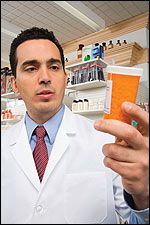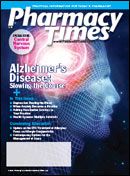Publication
Article
Pharmacy Times
Drug Diversion and Abuse: A Pharmacist's Dilemma?
Author(s):
A pharmacist who sees an issue with a given prescription simply should not fill it.
John Burke, commander of the Warren County, Ohio, drug task force and retired commander of the Cincinnati Police Pharmaceutical Diversion Squad, is a 40-year veteran of law enforcement. Cmdr Burke also is the current president of the National Association of Drug Diversion Investigators. For information, he can be reached by e-mail at linkEmail('burke','choice.net');, via the Web site www.rxdiversion.com, or by phone at 513-336-0070.

Recently, on a list server in whichI participate, a pharmacist wasposing a question to the healthprofessionals, law enforcement officers,and regulators as to the course of actionneeded in a dispensing issue. It seemsa local doctor was prescribing extra-strengthhydrocodone and acetaminophencombination to the tune of 120 pillsevery 9 to 10 days, creating the intake ofat least 9 g of acetaminophen per day forthe patient!
The physician had been warnedtwice by the pharmacy, yet he continuedto prescribe the medication,and the patient continued to have itfilled at the complaining pharmacy.Understandably, the pharmacist wasfeeling very uncomfortable being involvedin filling these prescriptions,and offered the situation to the groupfor input.
Corresponding Responsibility
I immediately responded that the prescribingand filling of these prescriptionswere, at the very least, irresponsible.In addition, I brought up the issueof corresponding responsibility as itrelates to pharmacists filling prescriptionswith which they have problems.This brought a response from a healthprofessional stating that correspondingresponsibility only applies on the federallevel to controlled substances, andsince acetaminophen is not one, it didnot apply. This might be true if not forthe fact that the acetaminophen wascombined with the hydrocodone in thetablet, clearly making it a controlledsubstance.

The other issue I brought up wasthe potential liability that could beincurred by the physician, as well asby the pharmacy and pharmacist fillingthese prescriptions, which are morethan double the recommended dailydosage of acetaminophen.
A member of the list server made arecommendation for the pharmacistto notify the medical board of theprescriber?s actions, and advise thepatient that the amount of acetaminophenbeing consumed could cause liverdamage and/or failure. He felt that thiswarning would surely put the patienton notice and the problem would solveitself.
The law enforcement officer madethe point that if the patient is an addict,the individual likely does not careabout the acetaminophen levels if ableto continue sustaining the habit. Theofficer went on to say this person mayvery well be selling all or part of thehydrocodone prescription to others, inwhich case acetaminophen warningswill fall on deaf ears.
A Clear-Cut Solution
Frankly, I see the solution to this scenarioto be very clear-cut, with no grayarea and no wiggle room for the pharmacistand her pharmacy?stop fillingthe prescriptions immediately! Notifythe patient of the potential medicalproblems that come with consumingthis much of the drug on a daily basis,and report the physician to the statemedical board.
I had difficulty in understanding whythe doctor had 2 warnings from thepharmacy, which was now consideringits course of action. Regardless ofwhether corresponding responsibilityis a valid issue here (and I think it is),and regardless of whether there is avalid lawsuit against the prescriber anddispenser, the commonsense answerhere is to cease filling these prescriptions.
The prescriber and dispenser wouldhave an overwhelming problem in tryingto convince a civil jury that theydid not realize 9 g of acetaminophenper day was not only inappropriate,but very dangerous. Of course, if thispatient dies from this prescribing anddispensing, the liability costs will skyrocket,with no money award that canadequately replace a human life.







